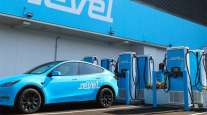Editorial: A Proper Pause for Safety’s Sake
The decision by Uber to halt testing of its autonomous trucks in the wake of a fatal accident involving one of its pilot autonomous cars was a prudent move, and one that demonstrates how the relentless pace of technological innovation sometimes needs a pause.
At this writing, multiple investigations are ongoing into the specific factors that contributed to this tragedy. Regardless of those findings, a life has been lost. The hope is that what’s learned as a result of these investigations leads to safety improvements that can prevent a similar tragedy from occurring.
This moment also provides an opportunity to remember that society is likely a long way from broad adoption of fully autonomous vehicle technology. Arguably, the sometimes breathless coverage of developments in autonomous mobility found in the press suggests a future that is nearer than is realistic. It makes for great headlines, but the reality is far more complex. In truth, we’re a long way away from that future.
The Uber incident, in Tempe, Ariz., proves that much more testing must take place, greater technological leaps must be made, and the involvement of a trained safety driver there to intervene should something go wrong must remain a central element of autonomous research.
In the meantime, what are sometimes called “driver-assist” technologies are here today, and can help improve safety for trucking fleets. Systems such as collision mitigation, stability control, adaptive cruise control and more can help drivers stay safe on the road. Beyond that, remote diagnostics programs can keep carriers informed about the condition of their trucks,and help prevent circumstances where drivers and trucks are stranded on the side of the road.
Most would agree that technology can and does bring improvement to our lives. But making sure that it does so on a safe and consistent basis is paramount. That means testing, learning about and modifying the systems that might, someday, bring those improvements.
The pace of technological development is fast, but it’s not a race. And there’s no timeline for when the next big advancement must be ready. If the tragedy in Tempe has taught us anything, it’s that while technological innovations may arrive in rapid succession, making sure they can be deployed safely should take all the time that’s needed.




